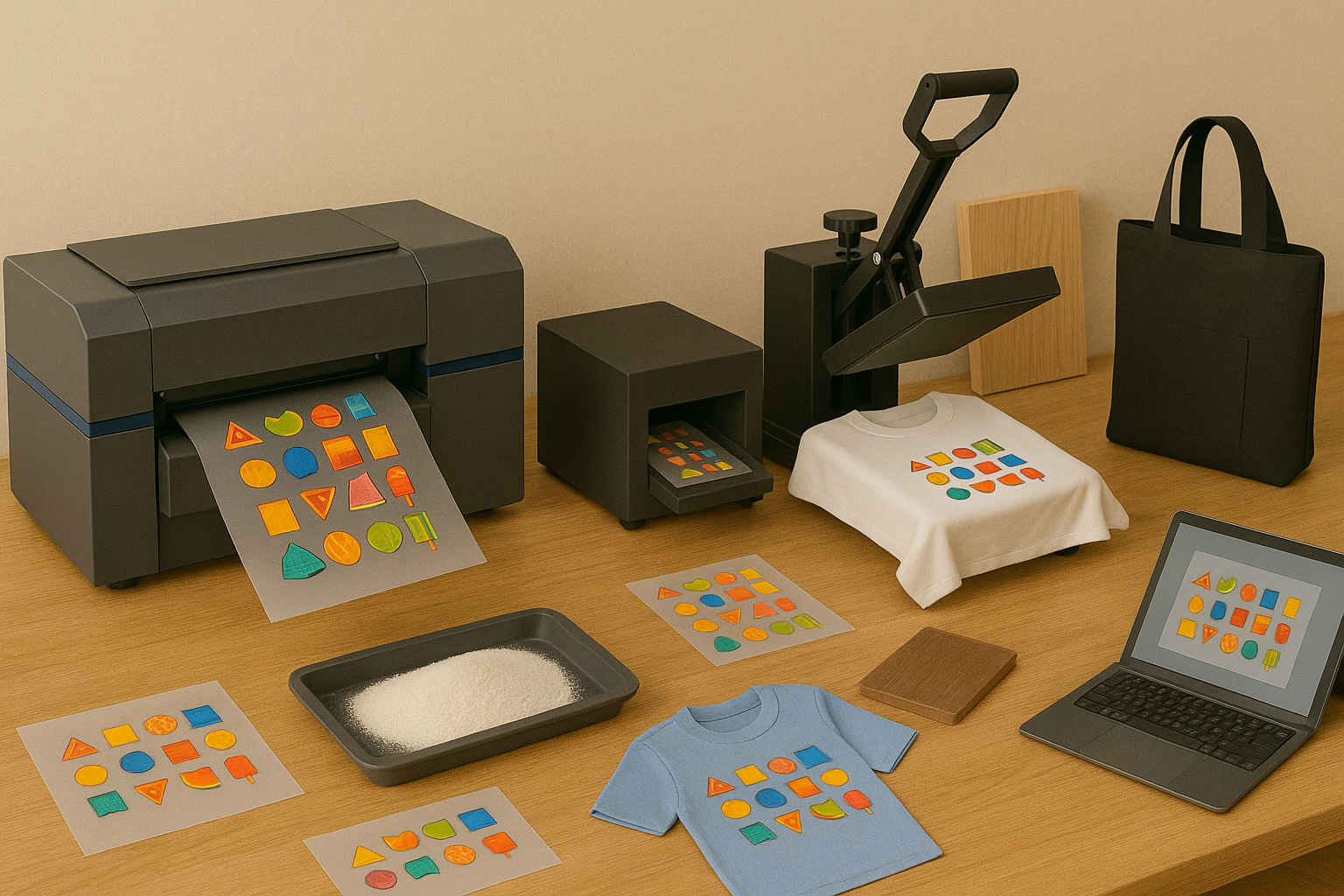
DTF vs. Sublimation Printing: Which Method Is Best for Your Apparel Business?
Introduction
If you’re trying to decide between DTF and sublimation printing, I’ve been in your shoes. I started out in custom apparel using sublimation presses, eventually switched to DTF, and now I run a full-time shop where we handle both—but mostly DTF.
Both methods have their place. But depending on what you're printing, how much gear you own, and what kind of garments you work with, one might be a much better fit than the other.
In this article, I’ll break down the key differences between DTF vs. sublimation, based on years of hands-on production. Whether you're printing for yourself or starting a clothing brand, this will help you choose the best T-shirt printing method for your needs.
What Makes Sublimation Appealing (And Where It Falls Short)
Sublimation printing has been around for decades, and it still has a loyal base for good reason. The process infuses dye into polyester fibers, meaning the print becomes part of the fabric. It doesn’t crack, peel, or add any texture. The result is a super soft, ultra-vibrant finish.
I used sublimation heavily when I first got started because it was affordable. You can convert an Epson printer, use sublimation ink, and get decent results without a huge investment. But here’s what people don’t often mention:
-
It only works on polyester (or very high poly blends).
-
You’re limited to light-colored garments. Sublimation ink is transparent, so it won’t show up on black or dark fabric.
-
Blanks matter. You need specially coated items or polyester-based clothing, which narrows your product catalog.
That worked fine when I was only doing sport jerseys or light poly shirts, but once I started getting custom orders for cotton hoodies, black tees, tote bags, and mixed fabric blends, sublimation just couldn’t deliver.
Why I Switched to DTF (And Why It’s Now My Go-To)
I moved into DTF printing around the time the technology started stabilizing. At first, I was skeptical — it felt like heat transfer with extra steps. But after running a few dozen prints, I saw how different it really was.
DTF lets you print full-color designs onto a special film, apply powder adhesive, and then heat press onto almost any fabric type. That includes:
-
Cotton (100%)
-
Poly blends
-
Canvas
-
Denim
-
Nylon (with care)
I’ve now used DTF to print everything from heavy cotton work shirts to zip-up hoodies, and the results are consistent. Colors stay rich, small details come through sharp, and durability is solid — especially if you're using a high-quality film and pressing at the right temperature.
You also don’t need pre-treatment (unlike DTG), and setup is faster than screen printing. That flexibility has made DTF my main production method.
DTF vs Sublimation: A Straightforward Comparison
Here’s how I break it down for clients or people new to printing:
|
Feature |
DTF Printing |
Sublimation Printing |
|
Fabric Compatibility |
Works on cotton, blends, synthetics |
Only works on polyester |
|
Garment Color Options |
Works on light and dark garments |
Only works on white or light colors |
|
Hand Feel |
Slight texture on the surface |
Feels like part of the fabric |
|
Durability |
Strong with proper wash care |
Extremely durable (if polyester) |
|
Startup Cost |
Medium (printer + film + powder) |
Low (converted printer + ink) |
|
Equipment Needed |
DTF printer or transfers + heat press |
Sublimation printer + heat press |
|
Versatility |
High — many product types |
Limited — poly only, no cotton |
If you're focused on polyester sportswear or mugs, sublimation can still be great. But if you're printing shirts for a streetwear brand or doing custom orders with variety, DTF wins on versatility and accessibility.
What I Recommend for New Printers
If someone comes to me asking, “Should I start with sublimation or DTF?” I usually ask one question:
Do you already have sublimation gear and plan to stay in the polyester space?
If yes, then stick with sublimation. But if not — and especially if you're starting from scratch or want to print on cotton or dark garments — DTF is the better long-term choice.
Here’s why:
-
You can start by ordering pre-printed DTF transfers and a heat press. No need to invest in a printer right away.
-
You can print on a much wider variety of clothing and accessories.
-
You can scale faster. Sublimation feels limiting once customers start asking for black hoodies or canvas totes.
Most small brands I work with now either use DTF in-house or outsource to a provider like DTFCenter that offers high-quality film transfers with fast turnaround.
Conclusion
I’ve used both sublimation and DTF in real-world production, and I can say this: sublimation is clean and soft, but DTF is flexible, scalable, and far more beginner-friendly when you don’t want to be limited by fabric or color.
If you're building a T-shirt brand, taking on custom orders, or just want the freedom to print on cotton without limitations, DTF is the method I’d recommend every time.
You don’t need a $5,000 setup either. You can start small by uploading your design and getting ready-to-press transfers. That’s how a lot of my clients now run their business — lean and focused.

Leave a comment